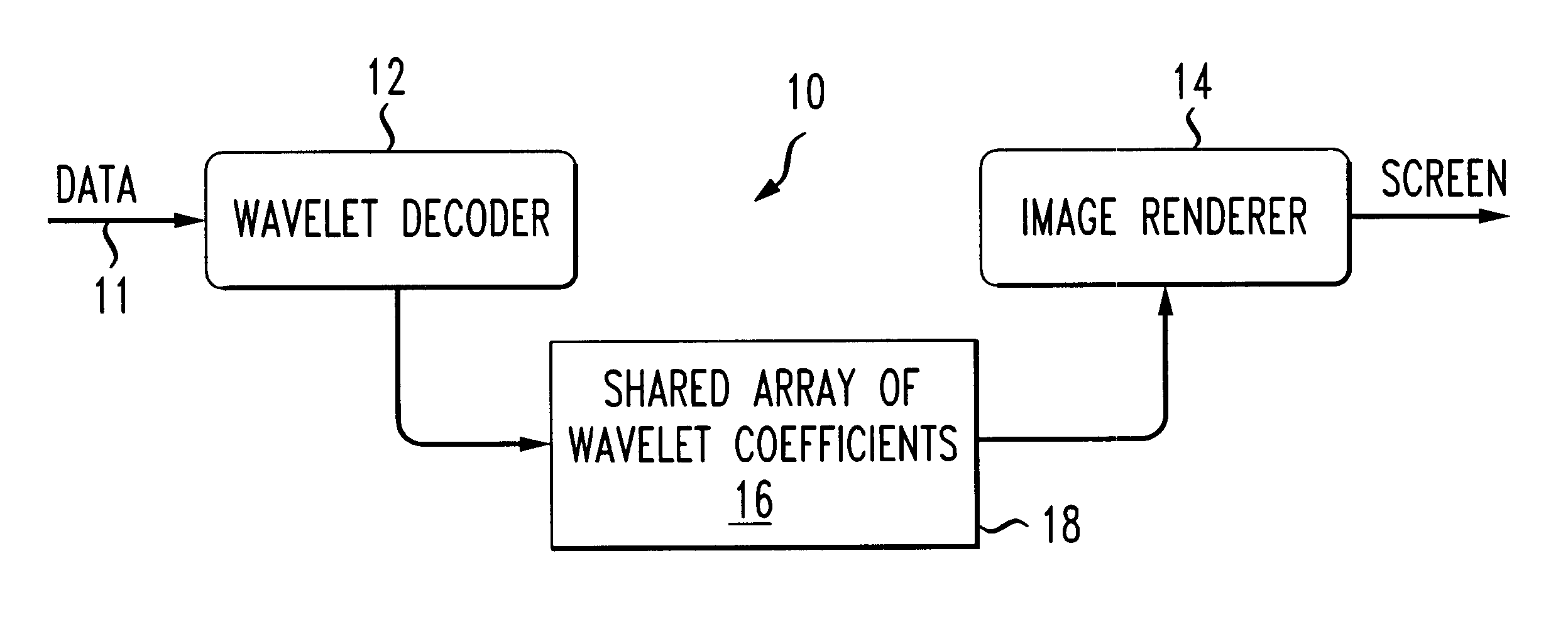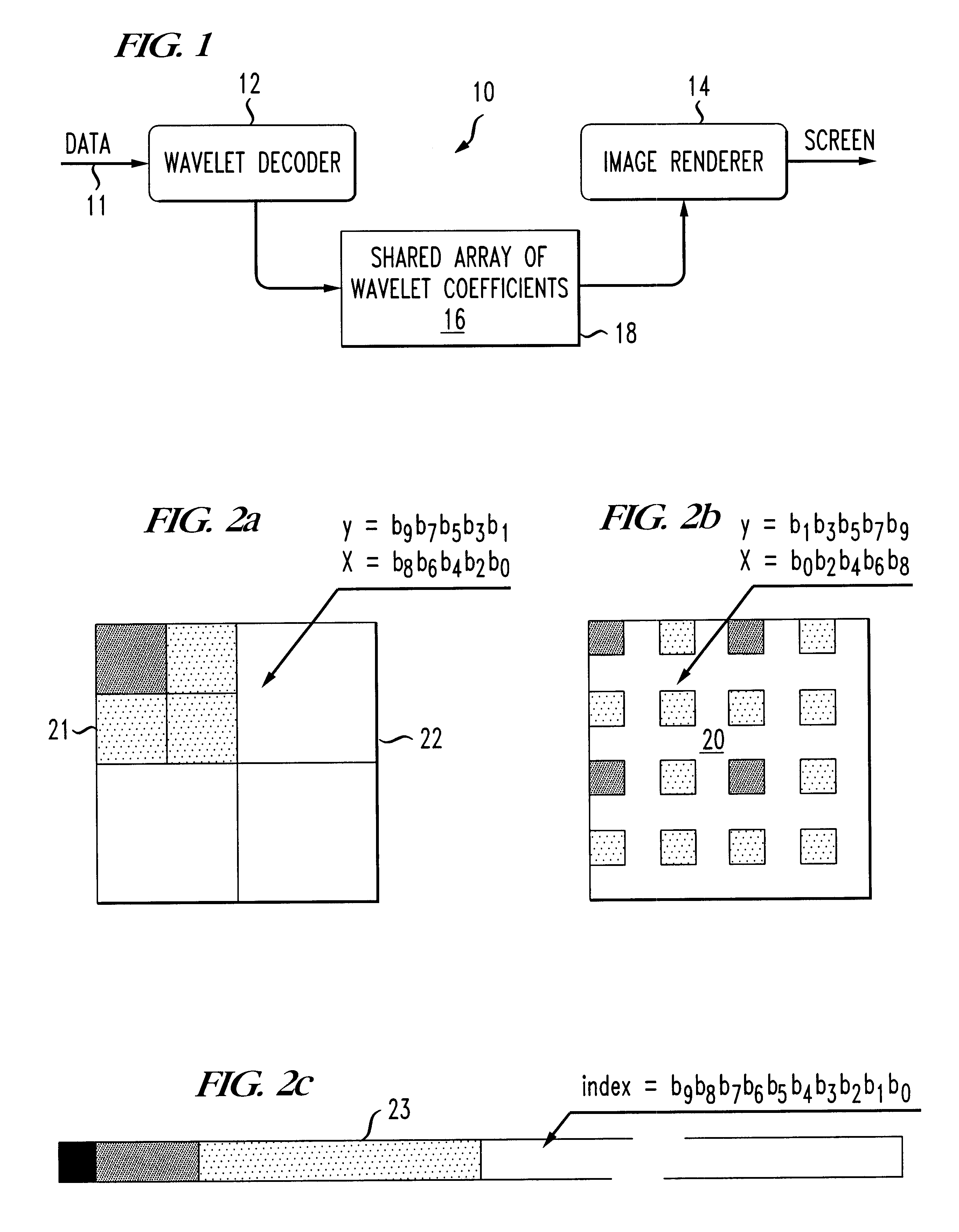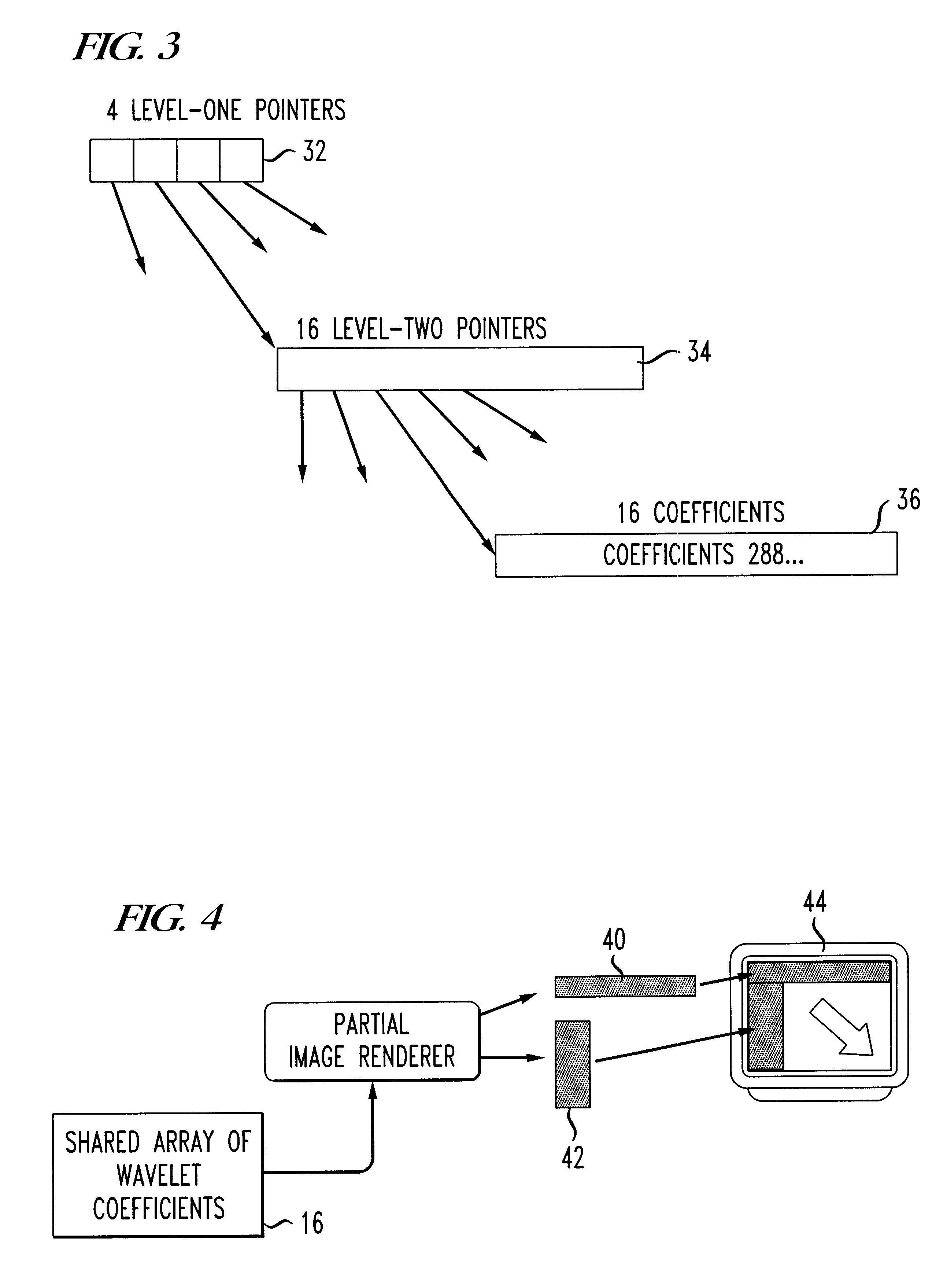Progressive image decoder for wavelet encoded images in compressed files and method of operation
a wavelet encoded image and decoder technology, applied in the field of progressive image transmission and methods of operation, can solve the problems of large image processing with such architecture, large wavelet coefficient array size, and inability to address the problem in the prior ar
- Summary
- Abstract
- Description
- Claims
- Application Information
AI Technical Summary
Benefits of technology
Problems solved by technology
Method used
Image
Examples
Embodiment Construction
Before describing the present invention of FIG. 1, a brief description of the compressed image file is believed appropriate for a better understanding of the decoder and the process of decoding the image file.
Image data for large images may be compressed / decompressed by any of the well known formats e.g. GIF, JPEG, etc. for use in the present invention. However, one image compression / decompression format which is especially suitable for the decoder of FIG. 1 is DjVu created by the assignee of the present invention. The DjVu specification is available on the World Wide Web at (http: / / dejavu.research.att.com / ) and also from. AT&T Shannon Laboratory, 180 Park Avenue, P. O. Box 971, Florham Park, N.J. 07932-0971. The DjVu IW44 component deals with wavelet encoded images and facilitates progressive rendering and smooth scrolling of large color or gray level images with limited memory requirements. Briefly, DjVu is a non-bit-preserving (lossy) compression method and file format for coding...
PUM
 Login to View More
Login to View More Abstract
Description
Claims
Application Information
 Login to View More
Login to View More - R&D
- Intellectual Property
- Life Sciences
- Materials
- Tech Scout
- Unparalleled Data Quality
- Higher Quality Content
- 60% Fewer Hallucinations
Browse by: Latest US Patents, China's latest patents, Technical Efficacy Thesaurus, Application Domain, Technology Topic, Popular Technical Reports.
© 2025 PatSnap. All rights reserved.Legal|Privacy policy|Modern Slavery Act Transparency Statement|Sitemap|About US| Contact US: help@patsnap.com



